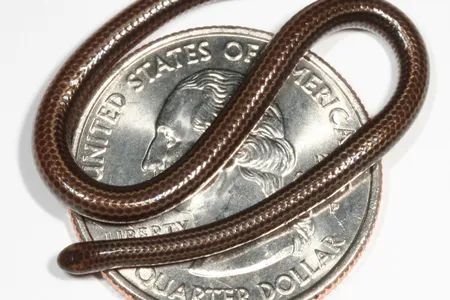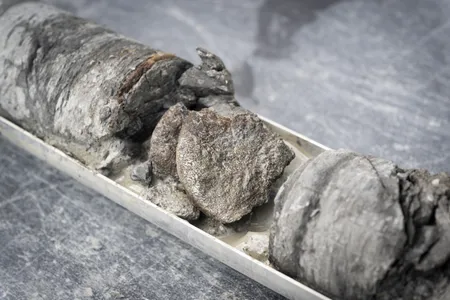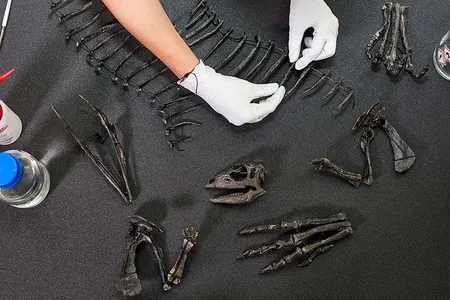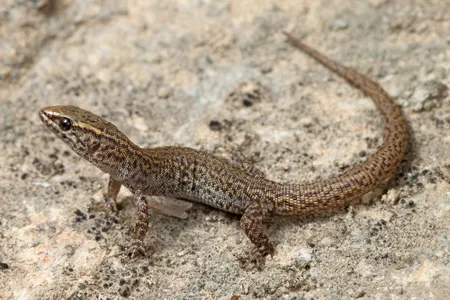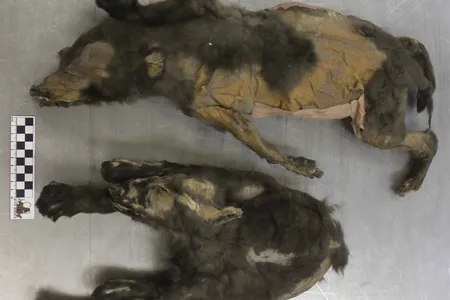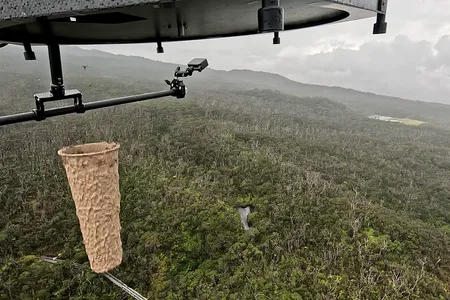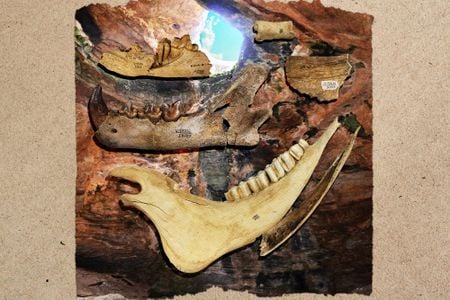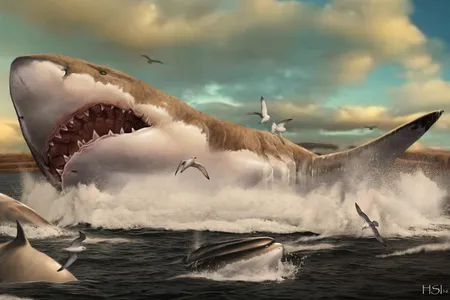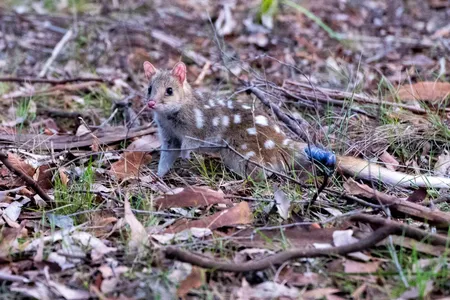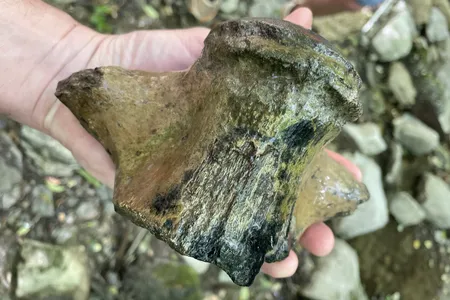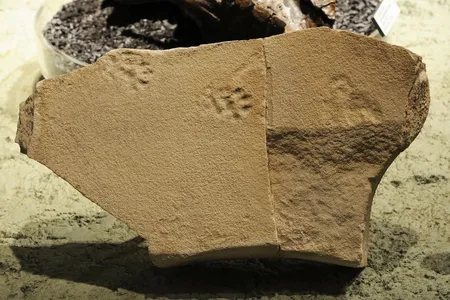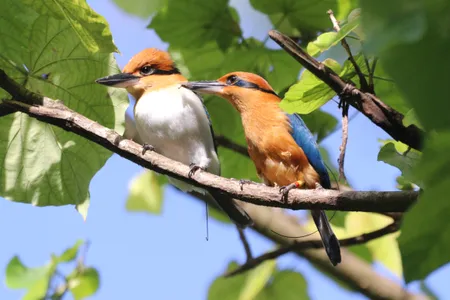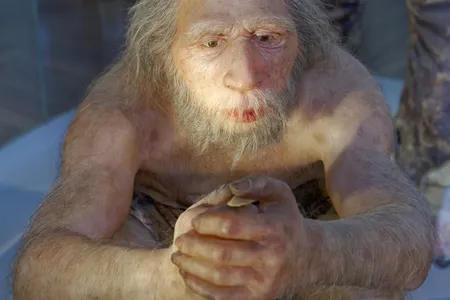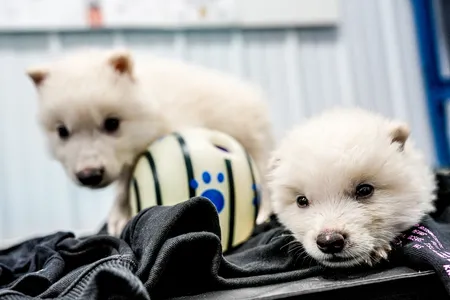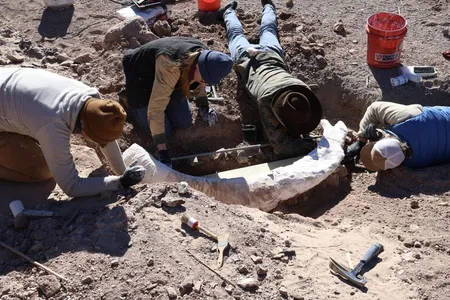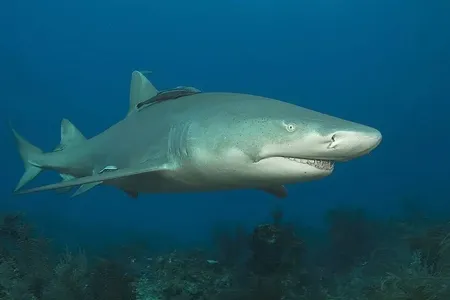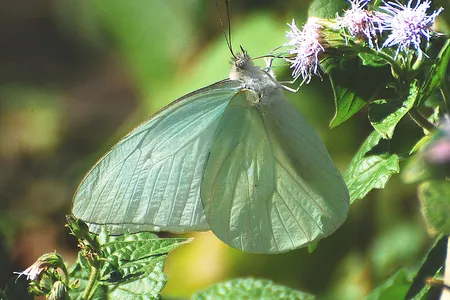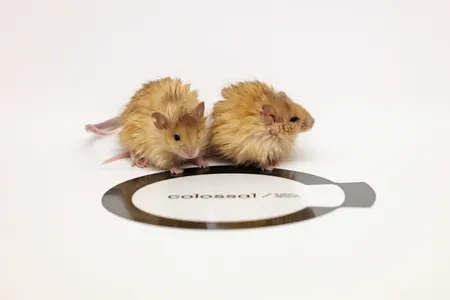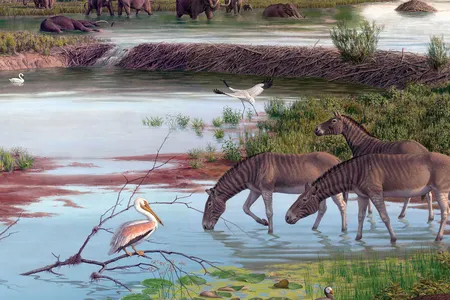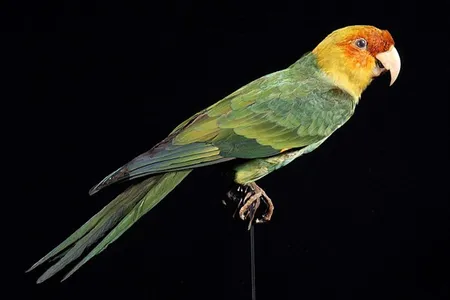Scientists Feared the World’s Smallest Snake Had Gone Extinct. They Just Found It Again
When fully grown, the Barbados threadsnake is only three to four inches long—shorter than many earthworms
‘Nothing Short of Magical’: Scientists Discover a Dinosaur Bone Nearly 800 Feet Beneath a Parking Lot at a Denver Museum
The partial vertebra appeared inside a 2.5-inch-diameter column of rock that researchers drilled, earning the title of the oldest and deepest dinosaur fossil found in Denver
‘Enigmatic’ Dog-Sized Dinosaur Reveals a New Species That Scampered Around Jurassic North America
The speedy, plant-eating creature lived in what is now Colorado roughly 150 million years ago, and its skeleton went on display in London this week
These Lizards Mysteriously Survived the Asteroid Strike That Killed the Dinosaurs—and Their Descendants Are Still Alive Today
Small and elusive night lizards probably persisted because they have slow metabolisms and like to hide out in rock crevices, a new study suggests
14,000-Year-Old ‘Puppies’ Found in Siberia Were Wolf Littermates Who Dined on Woolly Rhino
Researchers studied chemicals found in the animals’ bones, teeth and tissues, as well as genetic material from their stomach contents
Scientists Are Using Drones to Unleash Thousands of Mosquitoes in Hawaii in a Bid to Save Native Birds. Here’s How It Works
The lab-raised, non-biting male mosquitoes are meant to breed with the invasive ones on the islands and produce sterile eggs that will help suppress avian malaria
Journey Into a Prehistoric Cave That Trapped and Entombed Animals for Millennia
The animals that plummeted 85 feet into Wyoming’s Natural Trap Cave provide a layered history of life dating back to the Pleistocene
The Fearsome Megalodon Ate Basically Whatever It Wanted to Reach Its Daily 100,000-Calorie Need, Study Suggests
Scientists previously assumed the giant, prehistoric sharks mostly feasted on whales, but it turns out they probably weren’t so picky
See Eastern Quolls Get Released on Mainland Australia in a New Bid to Re-establish the ‘Magic Little Animal’
Conservationists recently introduced 15 of the polka-dotted marsupials into a protected area of New South Wales
Geologists Stumble Upon Remains of Giant ‘Sea Monster’ in Mississippi, Likely the Largest Mosasaur Ever Identified in the State
Researchers uncovered one vertebra, and based on its size, they estimate the massive creature was at least 30 feet long when it roamed the shallow seas that covered the region roughly 66 million years ago
50-Million-Year-Old Footprints Open a ‘Rare Window’ Into the Behaviors of Extinct Animals That Once Roamed in Oregon
Scientists revisited tracks made by a shorebird, a lizard, a cat-like predator and some sort of large herbivore at what is now John Day Fossil Beds National Monument
Biologists Rejoice as Extremely Rare Guam Kingfishers Lay Their First Wild Eggs in Nearly 40 Years
The brightly colored birds are extinct in the wild, having disappeared from their native Guam in 1988 due to the introduction of the invasive brown tree snake. But now, they’re starting to make a comeback on Palmyra Atoll
Sunscreen, Clothing and Caves May Have Given Modern Humans an Edge Over Neanderthals When Earth’s Magnetic Field Wandered
A new study suggests the extinction of Neanderthals nearly coincided with a shift in Earth’s magnetic field that let more radiation reach the ground. Our species might have adapted more easily
Have Dire Wolves, Which Went Extinct More Than 10,000 Years Ago, Really Been Brought Back to Life?
Pioneers in the science of “de-extinction,” an American company has announced the births of three pups whose genes resemble those of a species that hasn’t roamed Earth for millennia
A Hunter Was Out Looking for Deer in West Texas. He Found a Rare Mammoth Tusk Instead
Discovered in the drainage area of a creek bed, the tusk was initially thought to be “just an old stump”
Megalodon Might Have Been Longer and Skinnier Than Previously Thought, Growing Up to 80 Feet
A new paper suggests the enormous, extinct shark looked less like a bulky great white and more like an elongated lemon shark
U.S. Butterflies Are Disappearing at Drastic Rates, With One in Five Gone Since 2000
A new study finds the popular, fluttering insects have declined by 22 percent in the last 20 years
Biotech Company Creates ‘Woolly Mouse’ as a Step in Its Quest to Resurrect Woolly Mammoths Through Gene Editing
Colossal Biosciences leaders say the fluffy, golden-haired mice help validate their technique to “de-extinct” species, but outside scientists remain skeptical
See Stunning Illustrations of Prehistoric Life From One of the Most Renowned Paleoartists in the World
A new book highlights the beautiful work of Jay Matternes, an accomplished artist who drew everything from mammoths to early humans
The Last Member of This Bird Species Died in Captivity on This Day in 1918
Incas died at the Cincinnati Zoo, leaving behind mysteries over his death, his final resting place and the factors that led to the extinction of the Carolina parakeet
Page 1 of 20
